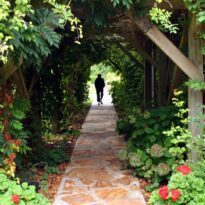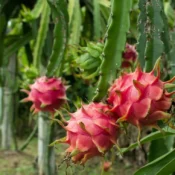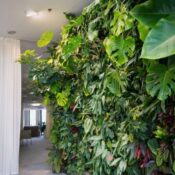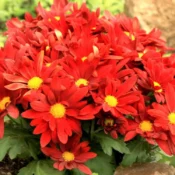
Butterfly havens are enchanting spaces where the beauty and delicacy of butterflies can be admired up close. These magical places provide an opportunity to observe the life cycle of these winged insects and learn about their ecology in a unique way. If you’re a nature enthusiast looking to immerse yourself in the creation of a butterfly haven, this detailed guide will lead you through all the necessary steps to establish a suitable environment for these magnificent creatures.
Why Establish a Butterfly Haven?
Beyond being visually stunning spectacles, butterfly havens hold significant educational value. They offer a unique opportunity to learn about the butterfly life cycle, from egg to caterpillar, chrysalis, and ultimately, the adult butterfly. By personally experiencing this cycle, you gain a deeper understanding of nature’s complexities and the importance of conserving butterfly habitats.
Step-by-Step Guide to Creating a Butterfly Haven
Step 0: Get Inspired and Explore Existing Butterfly Havens
Before diving into creating your own butterfly haven, it’s a great idea to draw inspiration and learn from renowned butterfly havens around the world. These places not only provide a fascinating glimpse into the butterfly world but also offer valuable insights into design, maintenance, and education surrounding these unique environments. Let’s explore some of the top butterfly havens that can serve as references for your project.
1. Butterfly Pavilion (Denver, USA)
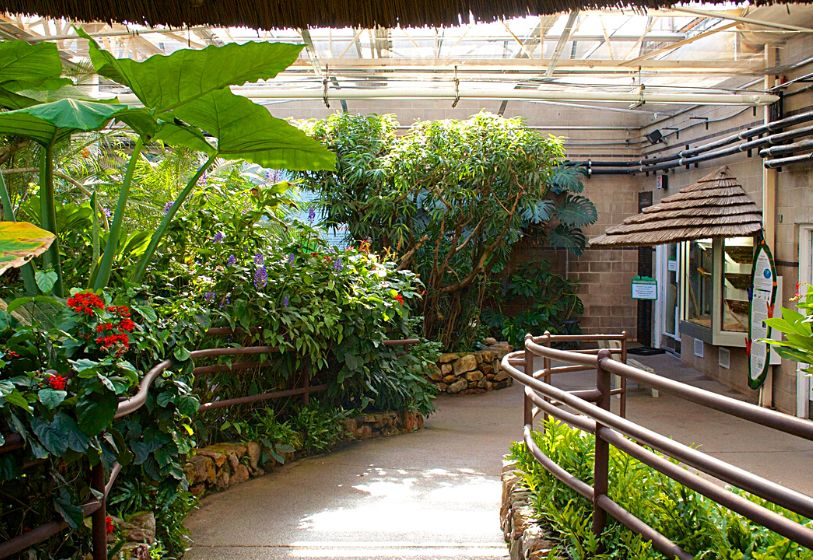
Located in Colorado, the Butterfly Pavilion is one of the world’s most well-known butterfly havens. It offers a variety of butterfly species in a lush tropical setting. Additionally, the pavilion features an outdoor garden filled with native plants that attract local butterflies. With an innovative educational approach, the Butterfly Pavilion offers interactive programs for all ages, highlighting the importance of conserving butterflies and their habitats.
2. Montreal Insectarium (Montreal, Canada)
Part of the Montreal Natural Museum of Science, the Insectarium havens one of the world’s largest collections of insects, including an impressive array of butterflies. Their free-flight butterfly exhibit allows visitors to immerse themselves in a vibrant and lively environment, providing an immersive and educational experience.
3. Penang Butterfly Farm (Penang, Malaysia)
One of the first butterfly farms dedicated to butterfly conservation and breeding in Asia, the Penang Butterfly Farm plays an active role in environmental education and awareness. Visitors can explore various butterfly species in simulated natural habitats while learning about the importance of tropical forest preservation.
4. Xcaret Park Butterfly Pavilion (Playa del Carmen, Mexico)
The Butterfly Pavilion at Xcaret Park combines butterflies with culture and conservation. Situated in the heart of the Riviera Maya, the pavilion offers visitors the chance to learn about Mayan traditions and the significance of butterflies in local culture. The natural setting and educational information make this an inspiring destination for anyone looking to create their own butterfly haven.
5. Stratford Butterfly Farm (Stratford-upon-Avon, United Kingdom)
This UK-based butterfly haven is an example of how a passion for nature can transform into an educational attraction. With a variety of butterfly species and other insects, the Stratford Butterfly Farm offers a unique experience for visitors. They also emphasize conservation and education, providing information about the threats facing butterflies and the measures that can be taken to protect them.
By learning about these renowned butterfly havens, you not only gain inspiration for creating your own magical butterfly space but also have the opportunity to learn from best practices in design, management, and education. Each of these havens demonstrates how a love for nature can be transformed into environments that captivate, educate, and contribute to the conservation of butterflies and their natural habitats. By embarking on the journey to create your own butterfly haven, you are following in the footsteps of nature enthusiasts and advocates around the world.
Step 1: Planning and Structure
Before embarking on building your butterfly haven, proper planning of the space’s structure is crucial. Determine the size of the haven based on available space and the number of butterflies you intend to raise. Additionally, consider the materials required to construct transparent walls, such as glass or screen, allowing natural light to enter and ensuring proper ventilation.
As you embark on the exciting journey of creating a butterfly haven, adequate planning and structure are key to establishing an environment conducive to the growth and reproduction of butterflies. Let’s delve into the steps involved in this important first phase.
1. Choosing the Location
The location of your butterfly haven plays a critical role in its success. Opt for a spot that receives adequate sunlight throughout the day. Sunlight will not only warm the space but also help maintain the ideal internal temperature for the butterflies. Avoid areas prone to strong winds or extreme temperatures, as these conditions can stress the butterflies.
2. Size and Structure
Before construction begins, determine the size of the butterfly haven based on factors like available space, budget, and the number of butterflies you plan to raise. Remember that a spacious haven allows butterflies to fly and move naturally, essential for their well-being.
For the structure, you can opt for materials such as glass, screen, or transparent plastic for the haven’s walls. Transparent walls allow natural light to enter, vital for host plants and butterfly development. Ensure the structure is secure and well-ventilated to prevent overheating.
3. Zones within the Butterfly Haven
Inside the butterfly haven, create distinct zones for different stages of butterfly development, such as:
- Egg and Larval Area: Allocate a section for placing host plants where female butterflies can lay their eggs. Ensure the plants are healthy and in good condition.
- Caterpillar Growth Area: Provide ample space for caterpillars to feed on host plants without overcrowding the area.
- Chrysalis Area: Have appropriate structures for suspending chrysalides, where butterflies undergo transformation.
- Feeding and Resting Area for Adult Butterflies: Include nectar plants and spots where butterflies can perch and rest.
4. Climate Control and Comfort
Maintain the temperature and humidity of the butterfly haven within a suitable range for the species you’re raising. Use thermometers and hygrometers to regularly monitor these conditions and make adjustments as needed. You might consider installing cooling or heating systems to ensure ideal conditions year-round.
5. Accessibility and Safety
Design the butterfly haven with accessibility in mind. Create doors or entrances that can be easily opened and closed. Additionally, ensure there are no risks for butterflies to escape. Fine screens on openings can help prevent unintended escapes.
6. Sustainable Materials
When constructing your butterfly haven, opt for sustainable materials whenever possible. Choose certified woods or recycled materials for the structure. This not only reduces environmental impact but also contributes to the harmony of the haven’s environment.
7. Landscape Planning
Think about landscape planning around the butterfly haven. If feasible, create an outdoor garden with additional host and nectar plants to attract wild butterflies to the area. This can help enrich the haven’s ecosystem and provide an even more comprehensive experience.
Creating a butterfly haven involves a blend of creativity, practical skills, and knowledge of butterfly needs. By thoughtfully designing your haven’s structure, you’re paving the way to offer a healthy and captivating environment for these wondrous winged creatures to thrive.
Step 2: Selecting Butterfly Species
Research butterfly species native to your region that are suitable for captive breeding. Some species are easier to rear than others, so start with those recommended for beginners. Keep in mind that different species have specific feeding and environmental requirements, so it’s important to choose those that match your haven’s conditions.
Choosing the right butterfly species is one of the most critical steps in creating a successful butterfly haven. Each species has unique habitat, feeding, and climatic needs. Therefore, by selecting appropriate species for your haven, you’re creating an environment where butterflies can flourish and successfully complete their life cycle.
Research and Selection
Before deciding which butterfly species to raise in your haven, invest time in research. Learn about native species in your area as well as those best suited for captive breeding. Opting for species already adapted to your local climate can increase your chances of success.
Additionally, consider factors like butterfly size, feeding habits, and habitat preferences. Some species prefer sunnier areas, while others thrive in shadier spots. Evaluate your haven’s conditions, such as temperature, humidity, and the availability of host and nectar plants, to ensure they meet the needs of the butterflies you intend to raise.
Larvae and Adults
It’s important to choose a variety of species that go through different life cycle stages. Some butterflies, like those from the Nymphalidae family, are known for their vivid and colorful caterpillars, while others have ornate chrysalides. This will provide a diverse observation and learning experience in your haven.
Beginner-Friendly Species
For those starting out, certain butterfly species are more suitable due to their adaptability and ease of rearing. Among the popular species for beginners are:
- Brimstone Butterfly (Gonepteryx rhamni): Known for their soft yellow coloring and generalist feeding habits.
- Peacock Butterfly (Aglais io): With its richly marked wings, the peacock butterfly is often found in gardens and open areas.
- Monarch Butterfly (Danaus plexippus): One of the world’s most famous butterflies, the monarch is known for its migrations and its relationship with Asclepias plants.
Embracing Diversity
While selecting butterfly species for your haven, aim to include a variety of sizes, colors, and behaviors. Butterfly diversity creates a visually appealing environment and enriches the experience for visitors to your haven. Remember that observing butterflies of different species also provides a broader perspective on the ecology of these insects and their roles within the ecosystem.
Choosing butterfly species for your haven is a crucial step that directly impacts the health and success of your project. By researching, selecting, and caring for the right species for the environment you’re creating, you’re offering a unique opportunity to observe and learn about these winged wonders up close. With the right species selection, you can create a vibrant and diverse butterfly haven that captivates both novice observers and seasoned nature enthusiasts alike.
Step 3: Creating the Suitable Environment
Butterflies require a controlled environment to thrive in a butterfly habitat. Maintain a constant temperature and avoid extreme heat or cold. Providing adequate humidity is crucial to assist butterflies in their survival. This can be achieved through regular watering of host plants and the general environment.
The success of a butterfly habitat largely depends on creating an environment that meets the specific needs of butterflies in all stages of their life. Reproduction, development, and well-being of butterflies rely on temperature, humidity, and overall environmental conditions. Here are the essential details for creating a suitable environment in your butterfly habitat:
Controlled Temperature:
Butterflies are ectothermic, meaning their body temperature is regulated by the surrounding environment. Therefore, it’s crucial to maintain a constant and suitable temperature for the species you intend to rear. The optimal temperature can vary depending on the species but generally falls within the range of 24°C to 30°C. Make sure to have a heating and/or cooling system to keep the temperature within this range.
Balanced Humidity:
Humidity is essential for the healthy development of butterflies, especially during the pupa (chrysalis) and adult stages. Butterflies often absorb moisture from damp surfaces, so you can create areas where they can perch and absorb water. Spraying water on plants also helps to maintain adequate humidity levels. Monitor humidity regularly and adjust as needed to prevent both excess and deficiency.
Adequate Ventilation:
Ensuring good air circulation is fundamental to keeping the environment fresh and preventing the buildup of excessive moisture, which can lead to diseases and issues for butterflies. Consider installing screen windows or fans that allow for the entry and exit of fresh air.
Natural Lighting:
Butterflies are creatures that adore sunlight. Plan the construction of the butterfly habitat to allow for natural light to enter during the day. Transparent walls (glass or mesh) will help maximize sunlight and provide a bright environment for the butterflies.
Flight Space:
Remember that butterflies need space to fly. An ample butterfly habitat allows them to engage in their natural behaviors such as mating and searching for food. Be sure not to overcrowd the space with plants and structures, leaving ample room for movement.
Natural Décor:
In addition to host and nectar plants, add natural elements such as logs, fallen branches, and stones to create an environment closer to the butterflies’ natural habitat. These elements can serve as resting places, shelters, and even surfaces for water absorption.
Constant Monitoring and Adjustments:
Maintaining a butterfly habitat is an ongoing process of monitoring and adjustments. Be attentive to changes in weather conditions and butterfly behavior. If humidity is too high, ventilate the space; if the temperature is outside the desired range, adjust the heating or cooling system. Continuous observation is vital to creating a stable and healthy environment.
Creating a suitable environment in your butterfly habitat is a crucial task that demands attention to detail and a commitment to constant maintenance. Striking the balance between temperature, humidity, lighting, and space is essential for the success of breeding and observing captive butterflies. By crafting an environment that mimics the natural conditions of butterflies, you provide them with a space where they can develop and thrive, allowing you to witness the wonder of these enchanting creatures up close.
Step 4: Selection of Host and Nectar Plants
Host plants are where female butterflies lay their eggs, and caterpillars feed. Nectar plants, on the other hand, provide sustenance for adult butterflies. Research the feeding preferences of the species you’ve chosen and plant a variety of suitable plants.
Choosing host and nectar plants is one of the most crucial aspects of creating a successful butterfly habitat. Host plants are essential to allow butterflies to lay their eggs and to provide food for the caterpillars that will hatch from them. On the other hand, nectar plants produce nectar, which provides energy for adult butterflies. Here’s a more detailed exploration of how to select and care for these plants:
Host Plants
Host plants play a pivotal role in the butterfly life cycle, as they are where females lay their eggs and where caterpillars feed upon hatching. Each butterfly species has its own preferred host plants. Research the butterfly species you intend to rear and discover which plants are suitable as hosts for them.
Besides providing a site for egg-laying and caterpillar sustenance, host plants should be abundant and healthy. Ensure that the plants are free from harmful pesticides and chemicals, as these can adversely affect butterflies in all life stages. Maintain a steady supply of these plants, allowing the caterpillars to feed and develop.
Nectar Plants
Nectar plants produce nectar, the primary food source for adult butterflies. When choosing nectar plants, opt for a variety of species that bloom at different times of the year. This ensures that butterflies have access to food throughout all seasons.
The diversity of colors and types of flowers is also important, as different butterflies are attracted to different flower types. Choose flowers in shades of red, pink, orange, and yellow, as these colors tend to be more appealing to butterflies. Additionally, flowers should be easily accessible for butterflies, with a suitable landing platform.
Examples of Host and Nectar Plants
Host Plants:
- Milkweed (for monarch butterflies)
- Citrus (for lemon butterflies)
- Nettles (for various butterfly species)
- Dandelion (for peacock butterflies)
- For more host plants check this article: 17 Host Plants: Nourishing the Butterfly Life Cycle
Nectar Plants:
- Butterfly Bush (Buddleia)
- Verbena
- Daisies
- Lavender
- Zinnia
- Lantana
Plant Care and Maintenance
Keeping the plants healthy is crucial for the success of your butterfly habitat. Make sure to water the host and nectar plants regularly to ensure a steady supply of water and nectar. Be vigilant about pests and diseases that may affect your plants, and adopt organic control practices, avoiding the use of harmful pesticides.
When choosing host and nectar plants, consider the climate and conditions of your butterfly habitat. Native plants of your region are often the best choices, as they are naturally adapted to the local environment.
The careful selection of host and nectar plants is a vital step in creating a successful butterfly habitat. By providing an environment rich in plant diversity, you ensure that your butterflies have everything they need to reproduce, grow, and flourish. By cultivating a garden that caters to the needs of different butterfly life stages, you are creating a sanctuary that celebrates the beauty of nature in all its stages.
Step 5: Daily Care and Observation
Maintaining a butterfly haven requires dedication. You’ll need to regularly check the plants, clean the space, and monitor the health of the butterflies. Observe the butterfly life cycle closely, from egg-laying to the emergence of adult butterflies. This will provide an educational and inspiring experience.
Maintaining a butterfly haven is a daily commitment that demands constant attention and meticulous care. Details matter because ensuring the well-being of the butterflies is fundamental to the success of your butterfly haven. Here is a deeper exploration of the daily care and observation you need to keep in mind:
Monitoring Butterfly Health
Start your day by dedicating time to check the health of the butterflies. Observe any signs of illness, stress, or abnormal behavior. If you notice weak butterflies, damaged wings, or abnormal behavior, it’s important to investigate the cause and take steps to resolve the issue. This may include adjusting temperature, humidity, or food supply.
Checking Host and Feeding Plants
Host and feeding plants are the lifelines of butterflies in your butterfly haven. Daily, inspect the plants for signs of pests, diseases, or food shortages. Remove wilted or damaged leaves to maintain a healthy environment for the butterflies and caterpillars.
Cleaning and Hygiene
Cleaning is essential to prevent the buildup of waste and the spread of diseases. Regularly clean the interior surfaces of the butterfly haven, removing food remnants, feces, and other debris. Maintain a clean and well-organized environment to ensure the butterflies’ health.
Providing Water and Nutrients
Ensure that butterflies have access to clean and fresh water. Place shallow containers with water in different areas of the butterfly haven. This not only provides hydration but also allows butterflies to absorb essential nutrients from the water.
Maintaining Environmental Conditions
Constantly monitor the environmental conditions of the butterfly haven. Ensure that the temperature and humidity are within the ideal ranges for the species you are raising. Avoid extreme fluctuations that may stress the butterflies. Use thermometers and hygrometers to monitor conditions.
Regulating Butterfly Population
The size of the butterfly population in the butterfly haven is important to ensure there is enough space, food, and resources for all. If the population starts to grow rapidly, consider separating adult butterflies and transferring some to another space or releasing them into the wild. Balance is essential to ensure the well-being of all butterflies.
Documentation and Continuous Learning
Keep a detailed record of daily observations. Note changes in behavior, butterfly lifespans, breeding success, and any issues you have encountered. This not only helps monitor the health of the butterfly haven but also contributes to your continuous learning about the needs of butterflies.
Emergency Preparedness
Have an action plan to deal with emergencies such as disease outbreaks or extreme weather conditions. Be prepared to isolate sick individuals, adjust environmental conditions, or take other necessary steps to ensure the safety of the butterflies.
By dedicating time and attention to daily care and meticulous observation, you will ensure that your butterfly haven is a healthy and conducive environment for butterflies. This dedication benefits not only the butterflies under your care but also enriches your understanding of the ecology of these remarkable insects.
Step 6: Education and Awareness
A butterfly haven is not just a space for observation; it is an opportunity to educate and raise awareness about the importance of butterflies and biodiversity in general. Consider offering guided tours, workshops, or activities for schools and community groups, sharing your knowledge and passion for nature.
In addition to providing an environment for butterfly observation, a butterfly haven can play a significant role in educating and raising awareness in the community about the importance of butterflies and biodiversity conservation.
Educational Activities
A well-managed butterfly haven can become a learning center for people of all ages. Here are some educational activities you can consider offering:
- Guided Tours: Organize guided tours for schools, community groups, and families. During the tours, explain the butterfly life cycle, the species present in the butterfly haven, and the role of butterflies in pollination.
- Workshops: Conduct hands-on workshops, such as building small-scale butterfly habitats or identifying different species. These practical activities will help people connect more deeply with the lives of butterflies.
- Lectures and Presentations: Give lectures on butterfly ecology, the importance of habitat conservation, and the challenges faced by species in our ever-changing world.
- Educational Programs for Schools: Develop specific educational programs for schools that align with curriculum objectives, providing students with opportunities to learn about nature in a practical way.
Environmental Awareness
In addition to providing information and knowledge, a butterfly haven can be a powerful tool for raising awareness about the importance of environmental conservation and biodiversity:
- Connection to Nature: By allowing people to see butterflies in a controlled environment, you can inspire them to develop a love for nature and to appreciate the importance of preserving the natural habitats of butterflies and other living beings.
- Discussion of Environmental Challenges: Use the butterfly haven as a space to discuss current environmental issues, such as habitat loss, pollution, and climate change, and show how these factors affect butterflies and wildlife in general.
- Promotion of Sustainable Actions: Encourage butterfly haven visitors to adopt sustainable practices, such as planting native plants in their own gardens, reducing pesticide use, and supporting conservation efforts.
- Inspiration for the Next Generation: The experiences shared in a butterfly haven can inspire children to become advocates for nature and consider careers related to conservation.
Creating a butterfly haven goes beyond mere butterfly observation; it is an opportunity to promote environmental awareness and inspire the next generation of nature advocates. By sharing your knowledge and passion with others, you are playing a crucial role in promoting biodiversity conservation and building a more sustainable world. An educational butterfly haven not only enriches the local community but also contributes to the preservation of these magnificent beings that captivate us.
Building and maintaining a butterfly haven is a journey that combines passion, knowledge, and dedication to nature. By creating an environment that mimics the natural conditions of butterflies, you will not only witness their incredible transformation but also contribute to the conservation of these magnificent beings. Moreover, a butterfly haven provides an educational platform to inspire others to value and protect the wildlife that surrounds us. So, embark on this adventure with enthusiasm and get ready to be enchanted by the magic of the butterflies that inhabit your own piece of paradise.


